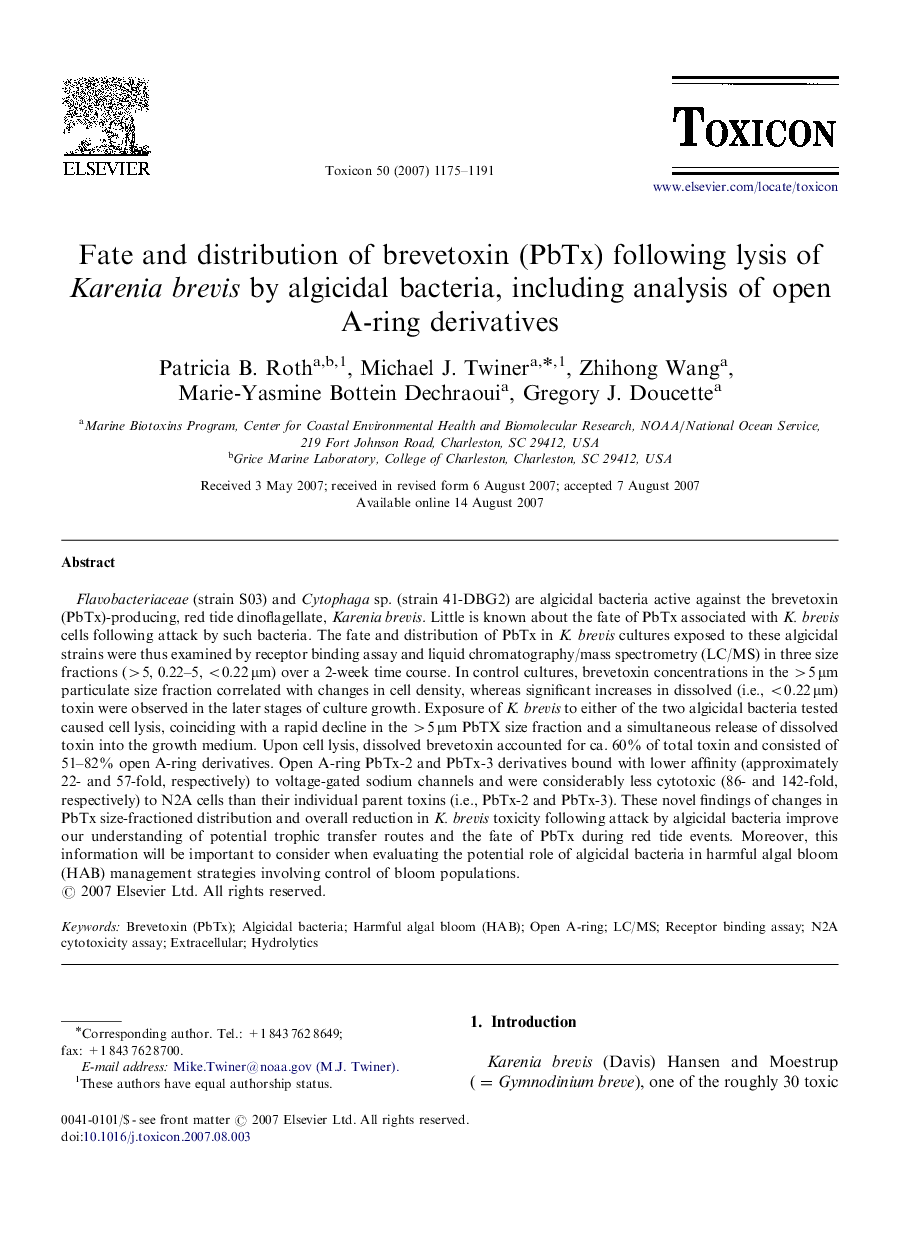| Article ID | Journal | Published Year | Pages | File Type |
|---|---|---|---|---|
| 2066015 | Toxicon | 2007 | 17 Pages |
Flavobacteriaceae (strain S03) and Cytophaga sp. (strain 41-DBG2) are algicidal bacteria active against the brevetoxin (PbTx)-producing, red tide dinoflagellate, Karenia brevis. Little is known about the fate of PbTx associated with K. brevis cells following attack by such bacteria. The fate and distribution of PbTx in K. brevis cultures exposed to these algicidal strains were thus examined by receptor binding assay and liquid chromatography/mass spectrometry (LC/MS) in three size fractions (>5, 0.22–5, <0.22 μm) over a 2-week time course. In control cultures, brevetoxin concentrations in the >5 μm particulate size fraction correlated with changes in cell density, whereas significant increases in dissolved (i.e., <0.22 μm) toxin were observed in the later stages of culture growth. Exposure of K. brevis to either of the two algicidal bacteria tested caused cell lysis, coinciding with a rapid decline in the >5 μm PbTX size fraction and a simultaneous release of dissolved toxin into the growth medium. Upon cell lysis, dissolved brevetoxin accounted for ca. 60% of total toxin and consisted of 51–82% open A-ring derivatives. Open A-ring PbTx-2 and PbTx-3 derivatives bound with lower affinity (approximately 22- and 57-fold, respectively) to voltage-gated sodium channels and were considerably less cytotoxic (86- and 142-fold, respectively) to N2A cells than their individual parent toxins (i.e., PbTx-2 and PbTx-3). These novel findings of changes in PbTx size-fractioned distribution and overall reduction in K. brevis toxicity following attack by algicidal bacteria improve our understanding of potential trophic transfer routes and the fate of PbTx during red tide events. Moreover, this information will be important to consider when evaluating the potential role of algicidal bacteria in harmful algal bloom (HAB) management strategies involving control of bloom populations.
